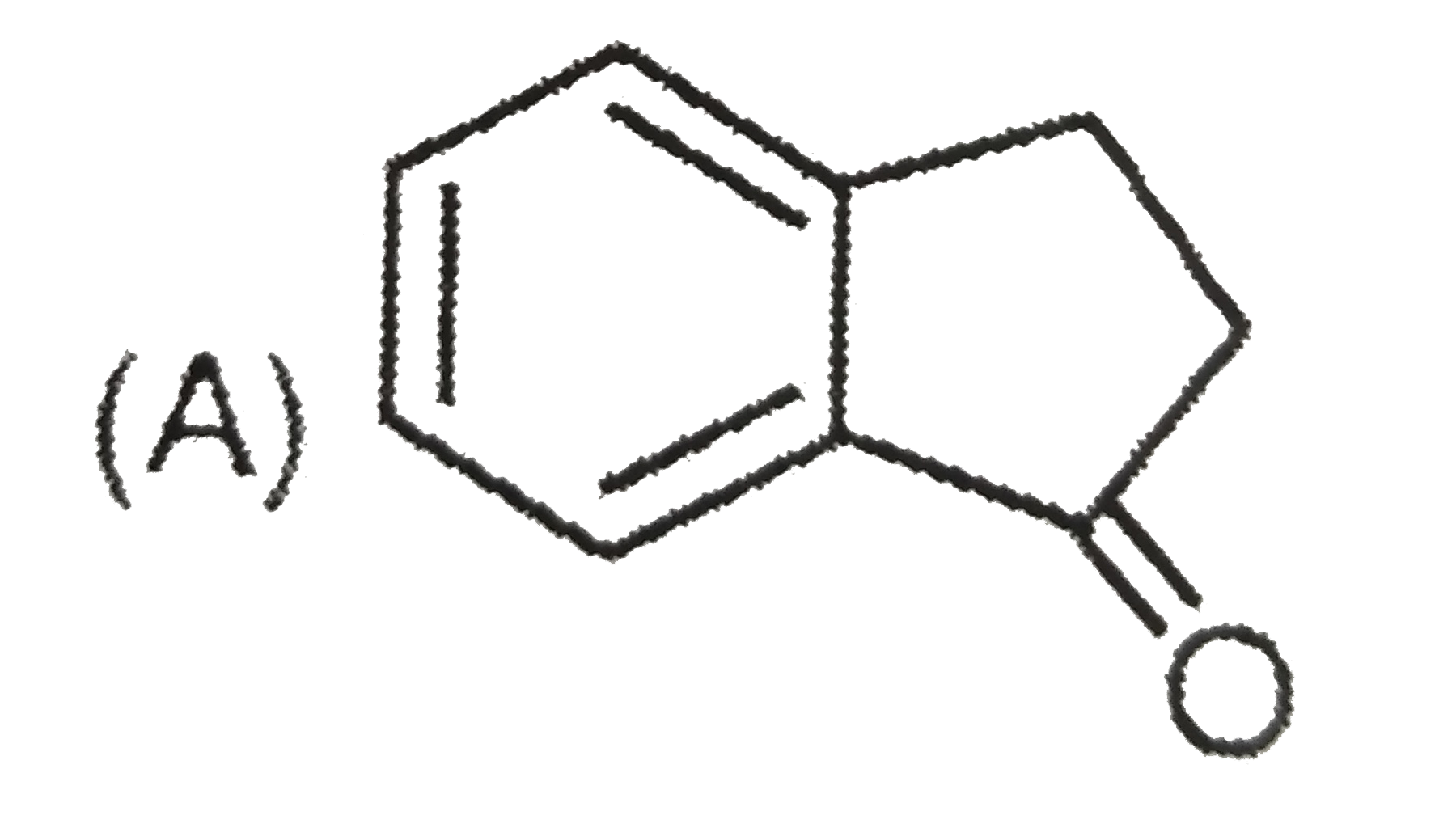Treatment of benzene with CO/HCl in the presence of anhydrous AlCl3/CuCl followed by reaction with Ac2O/NaOAc gives compound X as the major product. Compound X upon reaction with Br2/Na2CO3, followed by heating at 473 K with moist KOH furnishes Y as the major product. Reaction of X with H2/Pd−C, followed by H3PO4 treatment gives Z as the major product.
The compound Z is




The correct Answer is:A
To solve the problem step by step, let's break down the reactions and identify the compounds formed at each stage.
Step 1: Reaction of Benzene with CO/HCl and Anhydrous AlCl3/CuCl
- Reaction: Benzene reacts with carbon monoxide (CO) and hydrochloric acid (HCl) in the presence of anhydrous aluminum chloride (AlCl3) and cuprous chloride (CuCl).
- Product: This reaction is known as the Gatterman-Koch reaction, which introduces a formyl group (-CHO) into the benzene ring, resulting in the formation of benzaldehyde (C6H5CHO).
Step 2: Reaction of Benzaldehyde with Ac2O/NaOAc
- Reaction: The benzaldehyde obtained from Step 1 is then treated with acetic anhydride (Ac2O) and sodium acetate (NaOAc).
- Product: This reaction leads to the formation of an acetylated product, which is 4-acetylbenzaldehyde (C6H4(COCH3)CHO or CH3C6H4CHO).
Step 3: Bromination of Compound X
- Reaction: The compound X (4-acetylbenzaldehyde) is then treated with bromine (Br2) in the presence of sodium carbonate (Na2CO3).
- Product: This leads to bromination at the para position, resulting in the formation of 4-bromo-4-acetylbenzaldehyde.
Step 4: Heating with Moist KOH
- Reaction: The brominated product is then heated at 473 K with moist potassium hydroxide (KOH).
- Product: This reaction leads to the elimination of the bromine atom and the formation of an alkyne, specifically phenylacetylene (C6H5C≡CH).
Step 5: Hydrogenation of Compound X
- Reaction: The compound X (4-acetylbenzaldehyde) is subjected to hydrogenation in the presence of palladium on carbon (Pd-C) followed by treatment with phosphoric acid (H3PO4).
- Product: This results in the formation of 4-hydroxyacetophenone (C6H4(OH)(COCH3)), which is compound Z.
Conclusion
- Final Product (Z): The compound Z is 4-hydroxyacetophenone.
Summary of Compounds:
- X: 4-acetylbenzaldehyde (C6H4(COCH3)CHO)
- Y: Phenylacetylene (C6H5C≡CH)
- Z: 4-hydroxyacetophenone (C6H4(OH)(COCH3))
- Reaction: Benzene reacts with carbon monoxide (CO) and hydrochloric acid (HCl) in the presence of anhydrous aluminum chloride (AlCl3) and cuprous chloride (CuCl).
- Product: This reaction is known as the Gatterman-Koch reaction, which introduces a formyl group (-CHO) into the benzene ring, resulting in the formation of benzaldehyde (C6H5CHO).
Step 2: Reaction of Benzaldehyde with Ac2O/NaOAc
- Reaction: The benzaldehyde obtained from Step 1 is then treated with acetic anhydride (Ac2O) and sodium acetate (NaOAc).
- Product: This reaction leads to the formation of an acetylated product, which is 4-acetylbenzaldehyde (C6H4(COCH3)CHO or CH3C6H4CHO).
- Reaction: The compound X (4-acetylbenzaldehyde) is then treated with bromine (Br2) in the presence of sodium carbonate (Na2CO3).
- Product: This leads to bromination at the para position, resulting in the formation of 4-bromo-4-acetylbenzaldehyde.
- Reaction: The brominated product is then heated at 473 K with moist potassium hydroxide (KOH).
- Product: This reaction leads to the elimination of the bromine atom and the formation of an alkyne, specifically phenylacetylene (C6H5C≡CH).
- Reaction: The compound X (4-acetylbenzaldehyde) is subjected to hydrogenation in the presence of palladium on carbon (Pd-C) followed by treatment with phosphoric acid (H3PO4).
- Product: This results in the formation of 4-hydroxyacetophenone (C6H4(OH)(COCH3)), which is compound Z.
- Final Product (Z): The compound Z is 4-hydroxyacetophenone.
- X: 4-acetylbenzaldehyde (C6H4(COCH3)CHO)
- Y: Phenylacetylene (C6H5C≡CH)
- Z: 4-hydroxyacetophenone (C6H4(OH)(COCH3))
Topper's Solved these Questions
- CARBONYL COMPOUNDS (ALDEHYDES & KETONES ) & CARBOXYLIC ACID BOOK - RESONANCE ENGLISHCHAPTER - CARBONYL COMPOUNDS (ALDEHYDES & KETONES ) & CARBOXYLIC ACID EXERCISE - PART- IV
13 Videos
- CARBONYL COMPOUNDS (ALDEHYDES & KETONES ) & CARBOXYLIC ACID BOOK - RESONANCE ENGLISHCHAPTER - CARBONYL COMPOUNDS (ALDEHYDES & KETONES ) & CARBOXYLIC ACID EXERCISE - Exercise-3
1 Videos
- CARBONYL COMPOUNDS (ALDEHYDES & KETONES ) & CARBOXYLIC ACID BOOK - RESONANCE ENGLISHCHAPTER - CARBONYL COMPOUNDS (ALDEHYDES & KETONES ) & CARBOXYLIC ACID EXERCISE - Exercise-2 Part-I
1 Videos
- BIOMOLECULES & POLYMERBOOK - RESONANCE ENGLISHCHAPTER - BIOMOLECULES & POLYMEREXERCISE - ORGANIC CHEMISTRY(Biomolecules & Polymer)
34 Videos
- CHEMICAL KINETICSBOOK - RESONANCE ENGLISHCHAPTER - CHEMICAL KINETICSEXERCISE - PHYSICAL CHEMITRY (CHEMICAL KNIETICS & RADIOACTIVITY)
49 Videos
Similar Questions
Treatment of benzene with CO/HCl in the presence of anhydrous AlCl3/CuCl followed by reaction with Ac2O/NaOAc gives a compound X. Reaction of X with H2/Pd/c followed by treatment with H3PO4 gives another compound Y. The compound Y is :
View SolutionGive the major product of the following reaction

View Solution2. The major product of the following reaction is
View SolutionHow many toluidines on reaction with NaNO2/HCl followed by H3PO2 treatment gives Toluene.
View SolutionHeating of 2-chloro-1-phenylbutane with EtOK/EtOH gives X as the major product. Reaction of X with Hg(PAc)2/H2O followed by gives Y as the major product. Y is :
View SolutionThe major product (Y) of the following reactions is

View SolutionThe major product ‘Y’ in the following reaction is:

View SolutionThe major product ‘Y’ in the following reaction is:

View SolutionThe major product ' Y ' in the following reaction is

View SolutionThe major products X and Y in the following reaction are

View Solution
